
Xbox Series X Complete Specs, Ray Tracing, Latency, Backwards Compatibility and More Revealed - News
by William D'Angelo , posted on 06 May 2020 / 7,854 ViewsMicrosoft has provided a huge blowout of information on the Xbox Series X, including the complete systems specs.
The Xbox Series X includes an eight core 3.8 GHz Custom Zen 2 CPU, 12 TFLOPS 1.825 GHz Custom RDNA 2 GPU, 16 GB of GDDR6 memory, 1TB Custom NVME SSD, 1 TB Expansion Card expandable storage, support for USB 3.2 external HDD, 4K UHD Blu-Ray drive, and support for 4K at 60 FPS, and possibly up to 120 FPS.
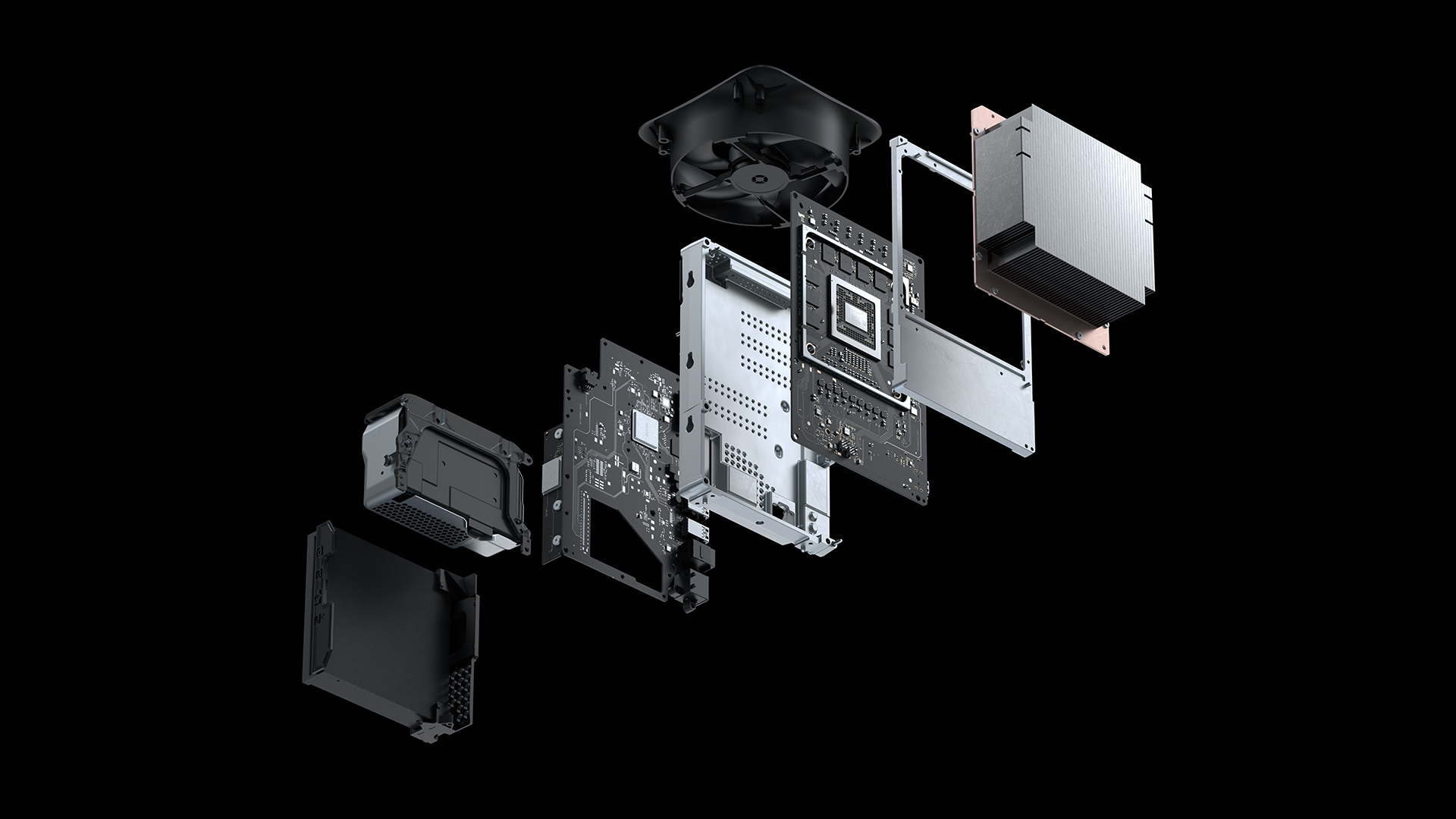
"While the Xbox Series X will deliver a massive increase in GPU performance and continue to redefine and advance the state of art in graphics with new capabilities such as hardware accelerated raytracing," said Jason Ronald, Director of Product Management on Xbox Series X, "we don’t believe this generation will be defined by graphics or resolution alone."
Sebastien Nussbaum, Corporate Vice President & Senior Fellow, Semi-Custom Products and Technologies at AMD added, "Xbox Series X is the biggest generational leap of SOC [System on a Chip] and API design that we’ve done with Microsoft, and it’s really an honor for AMD to be a trusted Microsoft partner for this endeavor.
"The Xbox Series X is going to be a beacon of technical innovation leadership for this console generation and will propagate the innovation throughout the DirectX ecosystem this year and into next year."
Read the complete system specs list below:
| CPU | 8x Cores @ 3.8 GHz (3.66 GHz w/ SMT) Custom Zen 2 CPU |
| GPU | 12 TFLOPS, 52 CUs @ 1.825 GHz Custom RDNA 2 GPU |
| Die Size | 360.45 mm2 |
| Process | 7nm Enhanced |
| Memory | 16 GB GDDR6 w/ 320mb bus |
| Memory Bandwidth | 10GB @ 560 GB/s, 6GB @ 336 GB/s |
| Internal Storage | 1 TB Custom NVME SSD |
| I/O Throughput | 2.4 GB/s (Raw), 4.8 GB/s (Compressed, with custom hardware decompression block) |
| Expandable Storage | 1 TB Expansion Card (matches internal storage exactly) |
| External Storage | USB 3.2 External HDD Support |
| Optical Drive | 4K UHD Blu-Ray Drive |
| Performance Target | 4K @ 60 FPS, Up to 120 FPS |
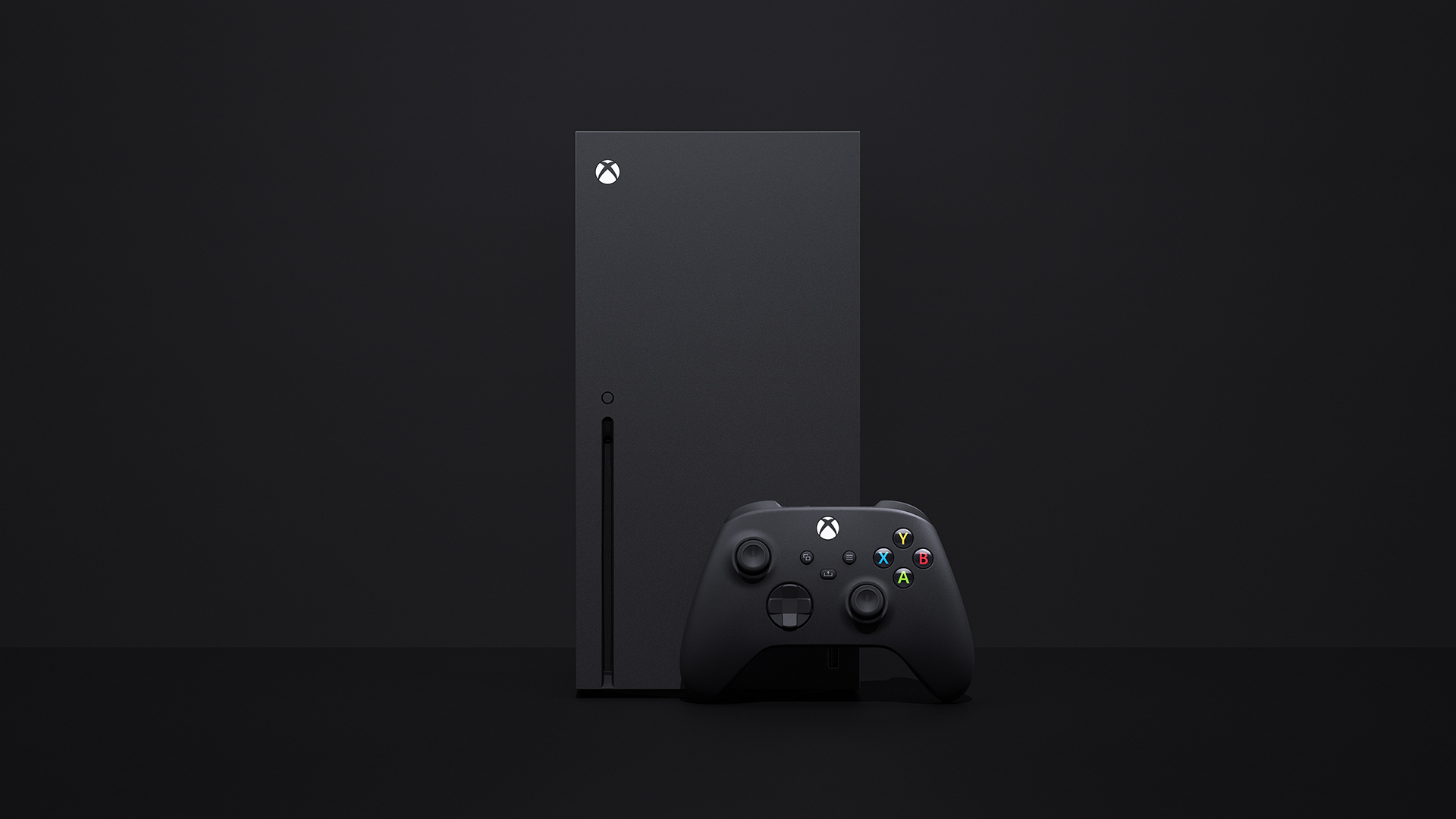
The Xbox Series X will also support hardware accelerated DirectX Raytracing. This technology "simulates the properties of light and sound in real time more accurately than any technology before it."
"To give us a better idea of how this technology directly impacts games, Clayton Vaught, Technical Director for Minecraft, ran us through a technical demo of how raytracing could impact one of the world’s most popular games," reads the breakdown article on the Xbox Series X.
"Switching back and forth between current visuals to hardware accelerated DirectX Raytraced visuals, Vaught walked around a pre-built Minecraft world to show off the ways realistic lighting completely changes the game. Shadows cast from objects soften or harden depending on how far away from the object you are, while lava gives off a warm orange glow that dissipates over distance and reflects off of minecart rails. Even the moon casts its own rays, streaming down through cracks in the walls and reflecting off particles in the air. The Raytraced visuals fundamentally change the way Minecraft feels, drawing the player in and immersing them in a much more realistic world.
"Shadows cast from objects soften or harden depending on how far away from the object you are, while lava gives off a warm orange glow that dissipates over distance and reflects off of minecart rails. Even the moon casts its own rays, streaming down through cracks in the walls and reflecting off particles in the air. The Raytraced visuals fundamentally change the way Minecraft feels, drawing the player in and immersing them in a much more realistic world.
"The most impressive feature (at least for yours truly) was the way light now passes through transparent objects like glass, picking up the color on its way to your eyes. This was beautifully demonstrated while walking through a hallway lined with a veritable rainbow of colored glass cubes, each of which cast a different colored shadow on the floor. The big wow moment came from the most unassuming of substances: water. With raytracing on, water was now fully transparent and allowed light from the moon to pass through it to the player underneath and realistically reflect off the seaweed swaying in the current.. It was really an impressive demo that brought what hardware accelerated DirectX Raytracing in Minecraft could deliver to life in a way I never imagined."
Check out what raytracing can do with Minecraft below:
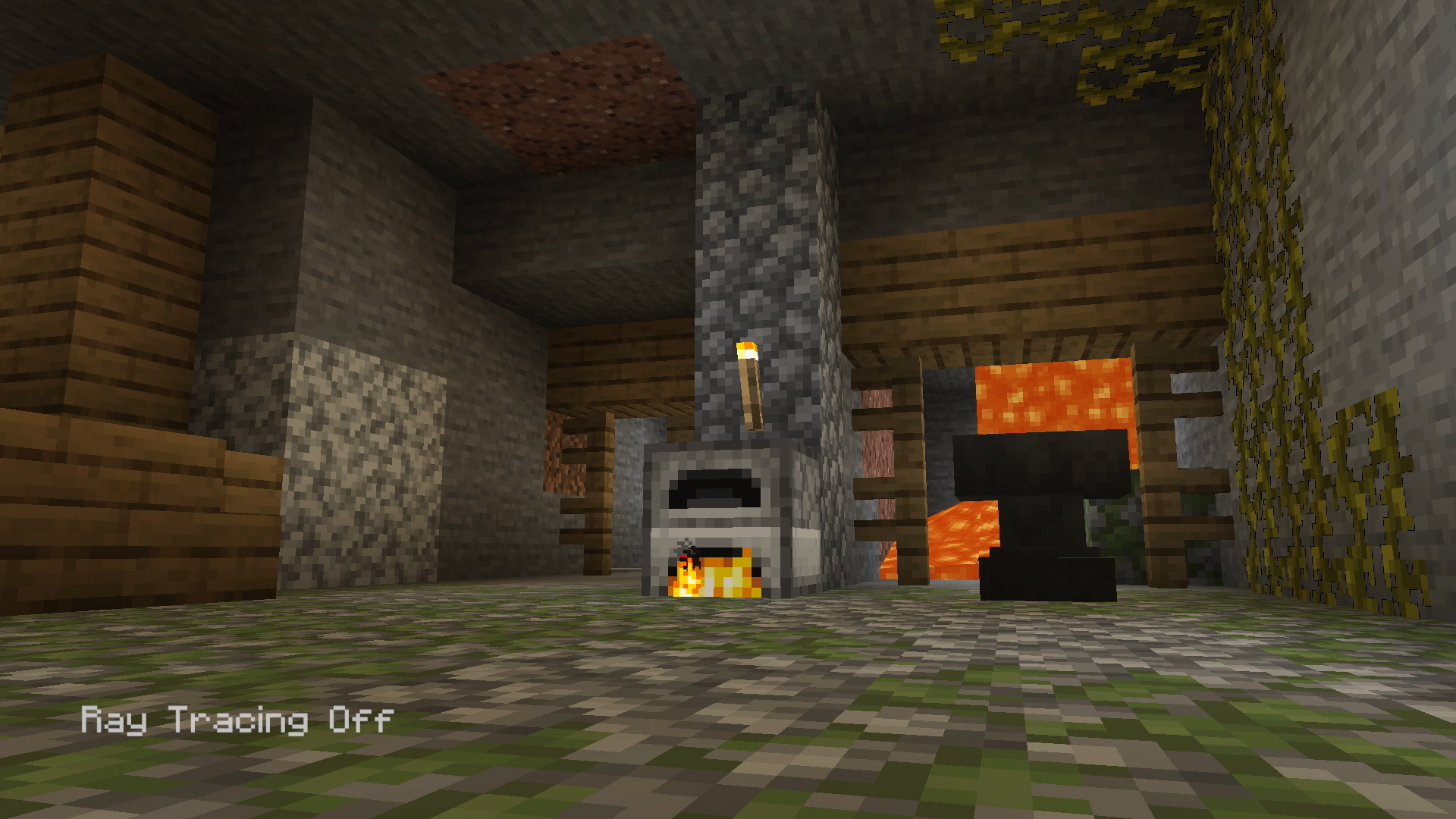
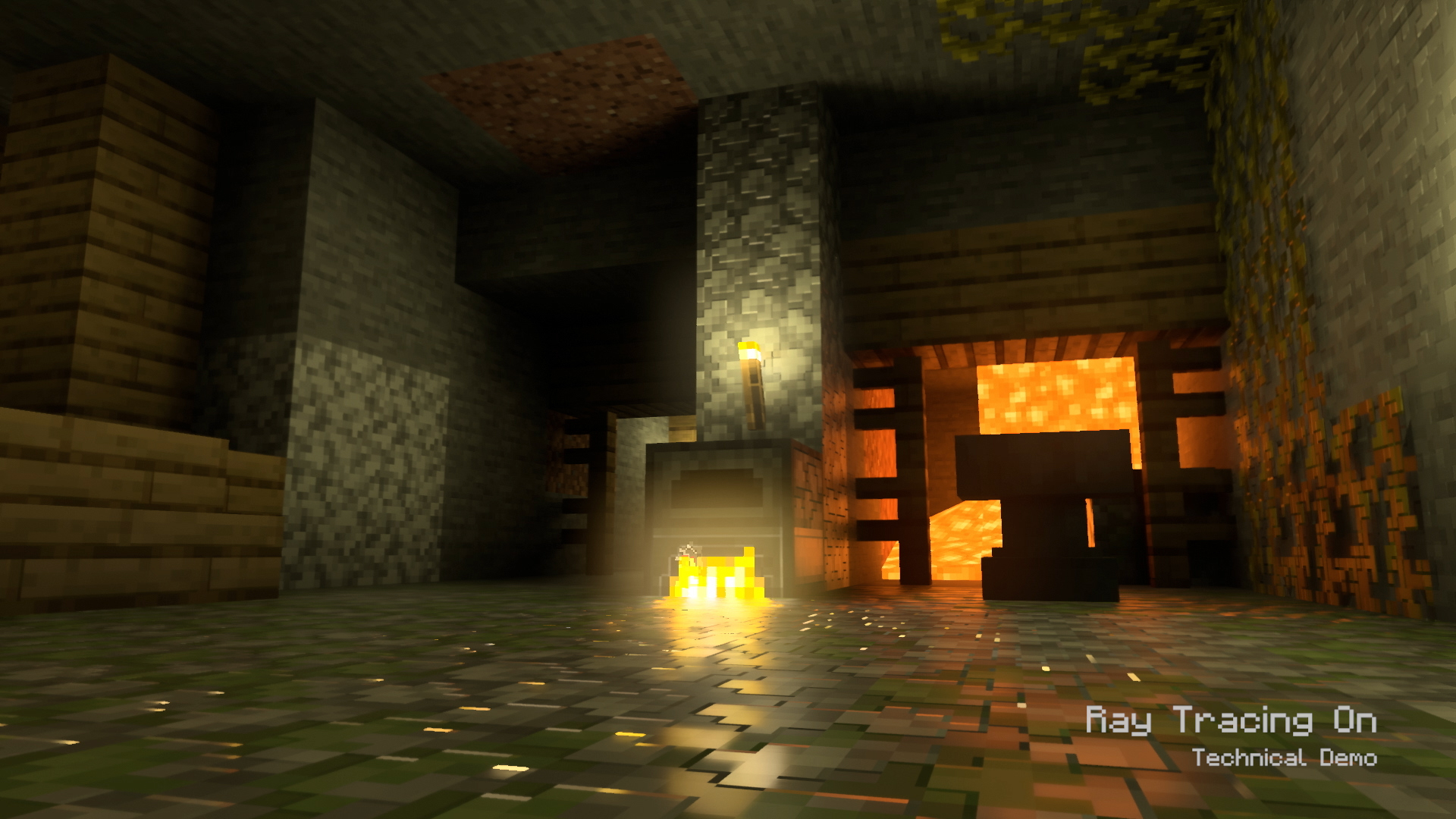
The Coalition’s Technical Director, Mike Rayner showed how his team is optimizing Gears 5 for the Xbox Series X. "The team showcased a technical demo of Gears 5, powered by Unreal Engine, for Xbox Series X using the full PC Ultra Spec settings, which included higher resolution textures and higher resolution volumetric fog, as well as a 50% higher particle count than the PC Ultra Specs allowed. They also showed off the opening cutscene, which now runs at 60 FPS in 4K (it was 30 FPS on Xbox One X), meaning the transition from real-time cutscenes to gameplay is incredibly smooth."
Check out the changes to the game running between the Xbox One X and Xbox Series X versions of Gears 5 below:
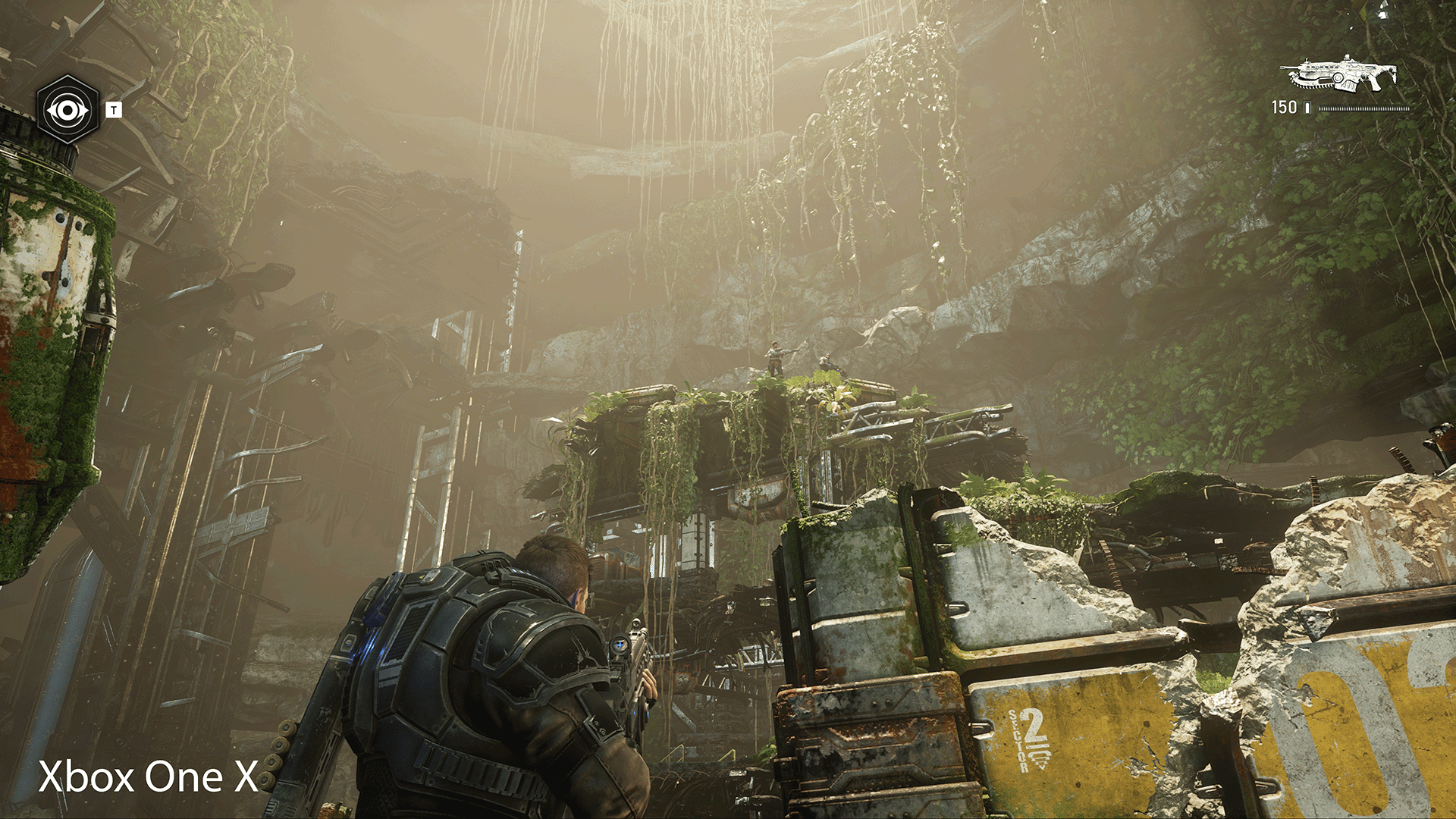
Next up Microsoft discussed the speed of the Xbox Series X. This can be "defined in a large number of different ways. Modern devices have changed our expectations on how quickly you can move between experiences or applications. Most of us want to be able to instantly jump into an experience or return right to where we left off. This influenced the team designing the system architecture, as they wanted to ensure they enabled gamers to spend more time playing and less time waiting."
One of the biggest changes between the Xbox One X and the Xbox Series X is the inclusion of a solid-state drive (SSD). The team invested in SSD level I/O speeds, which will greatly improve load times for games.
The Xbox Velocity Architecture, is something the team has been working on. "[It] features tight integration between hardware and software and is a revolutionary new architecture optimized for streaming of in game assets. This will unlock new capabilities that have never been seen before in console development, allowing 100 GB of game assets to be instantly accessible by the developer. The components of the Xbox Velocity Architecture all combine to create an effective multiplier on physical memory that is, quite literally, a game changer."
Andrew Goossen, Technical Fellow on Xbox Series X at Microsoft, said,"The CPU is the brain of our new console and the GPU is the heart, but the Xbox Velocity Architecture is the soul. The Xbox Velocity Architecture is about so much more than fast last times. It’s one of the most innovative parts of our new console. It’s about revolutionizing how games can create vastly bigger, more compelling worlds.
"Competitive gamers and the best gaming experiences demand precise, responsive controls. The Xbox team analyzed the entire end to end input pipeline, from the controller to the console and from the console to the display and we challenged ourselves to identify every opportunity to further reduce latency to provide the best experience for gamers on Xbox."
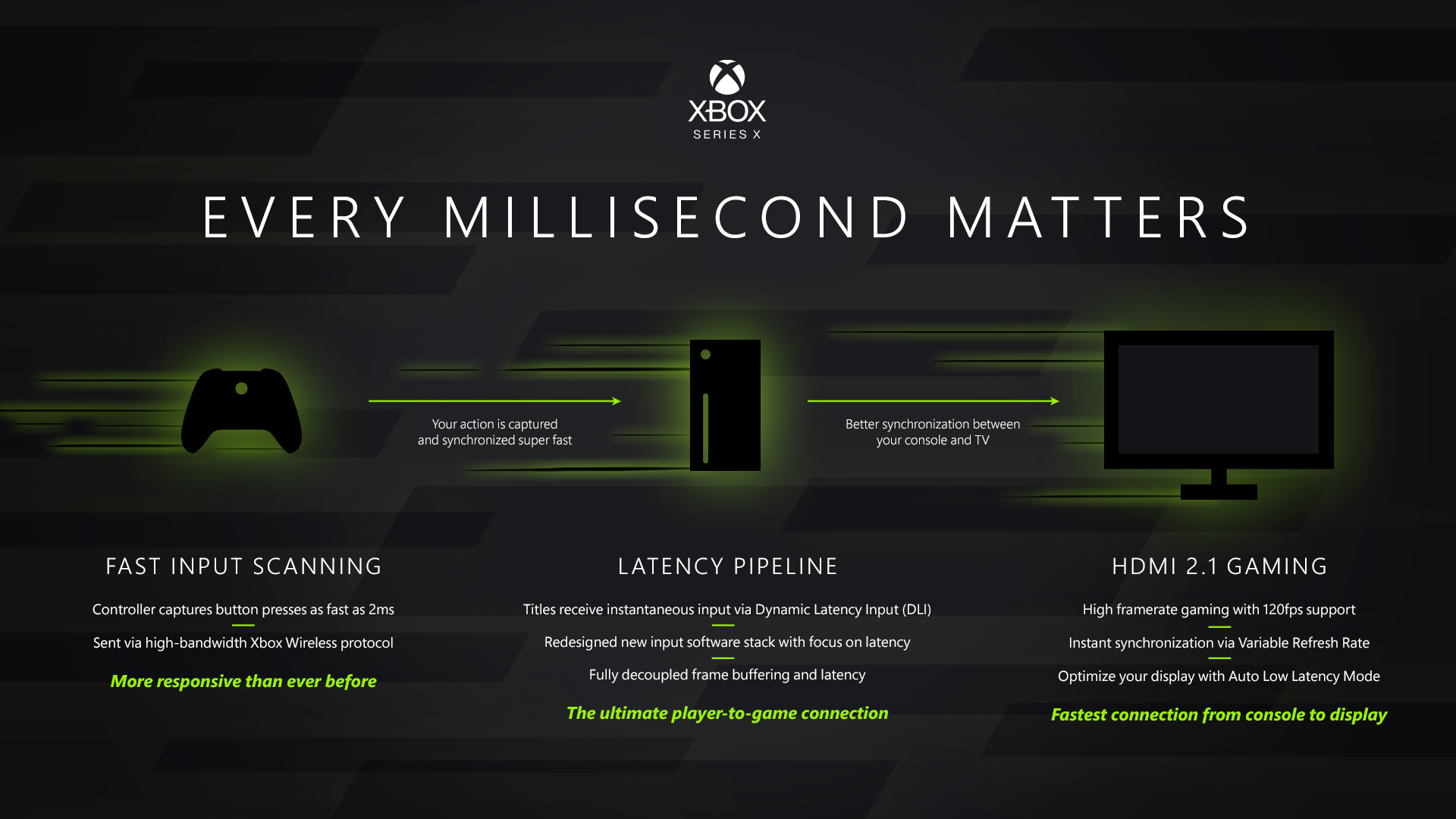
"There’s also the new Quick Resume technology that we outlined in our last blog post," reads the article. "With current gen consoles, you can resume the last game you played. However, since most players play (on average) three to four games a month, the team wanted to give them the option to switch between them easily and quickly. With Quick Resume, you can resume multiple games with the press of a button, instantly jumping back into the action, right where you left off, for multiple titles at the same time.
"Since game states will be stored directly in the system’s SSD, they’ll even persist after you turn off the console, unplug it entirely, or even take a system update. One of the testers on the team unplugged his console for a week, then took an update, and was still able to continue right where he left off without so much as a loading screen."
The final thing the article discusses is the Xbox Series X backwards compatibility. Not only will "thousands of games on Xbox One, including Xbox 360 and original Xbox games," play on the Xbox Series X, but they will "play even better" on the next generation console. This includes better load times, more stable fran rates, higher resolution and improved image quality.
"The community’s response to Phil’s announcement of 360 backward compatibility at E3 2015 was one of the biggest career highlights for me in my time as part of Team Xbox,” said Ronald.
"Peggy Lo, Principal Program Management Lead, Backward Compatibility, added, "The team came and told us about Xbox Series X. They said ‘What can you do with even more power?’ So, the challenge was set. They gave us the Xbox One X and it was like we got this big playground to play with. Then we got the Xbox Series X and it was like we had a whole amusement park to play in."
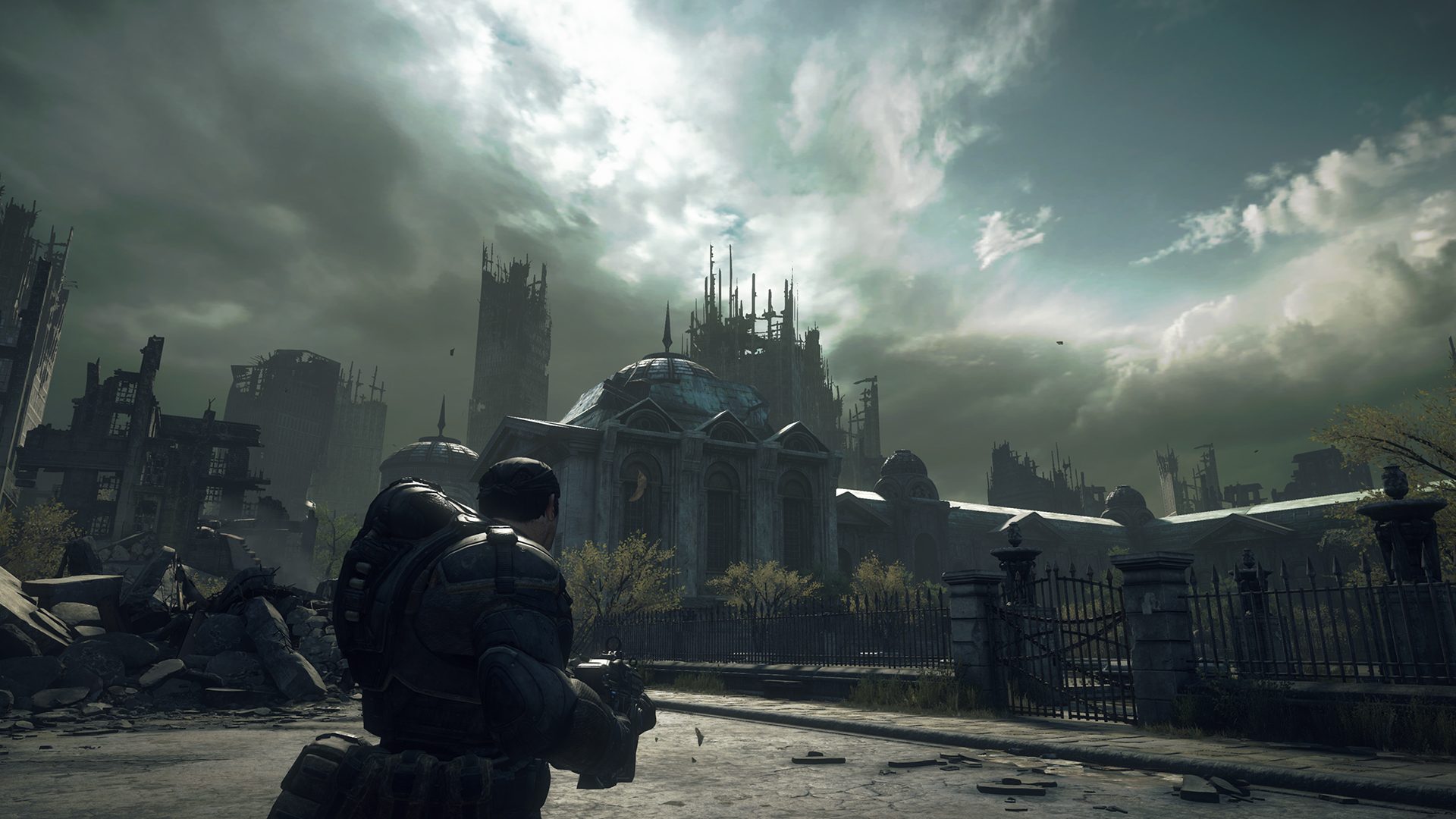
Microsoft has provided a guide with all the technology seen in the Xbox Series X. Read the complete guide to all the definitions below:
Auto Low Latency Mode (ALLM) – As part of commitment to responsiveness for the next generation of console gaming, Xbox Series X supports Auto Low Latency Mode (ALLM) with capable displays. ALLM automatically enables your display’s lowest latency mode when you start playing. This functionality exists on Xbox One consoles today
Backward Compatibility – At Xbox, we’ve made a promise to compatibility: you can expect thousands of your favorite games across four generations of gaming, your Xbox One gaming accessories, your Xbox gaming legacy, and industry-leading services like Xbox Game Pass to work with Xbox Series X. Backward compatible games will benefit from the power and performance of Xbox Series X, resulting in steadier framerates, faster load times, improved resolution and visual fidelity. Fans and game creators can feel confident they will be able to play and create the best version of their games on the Xbox Series X.
DirectML – Xbox Series X supports Machine Learning for games with DirectML, a component of DirectX. DirectML leverages unprecedented hardware performance in a console, benefiting from over 24 TFLOPS of 16-bit float performance and over 97 TOPS (trillion operations per second) of 4-bit integer performance on Xbox Series X. Machine Learning can improve a wide range of areas, such as making NPCs much smarter, providing vastly more lifelike animation, and greatly improving visual quality.
DirectStorage – DirectStorage is an all new I/O system designed specifically for gaming to unleash the full performance of the SSD and hardware decompression. It is one of the components that comprise the Xbox Velocity Architecture. Modern games perform asset streaming in the background to continuously load the next parts of the world while you play, and DirectStorage can reduce the CPU overhead for these I/O operations from multiple cores to taking just a small fraction of a single core; thereby freeing considerable CPU power for the game to spend on areas like better physics or more NPCs in a scene. This newest member of the DirectX family is being introduced with Xbox Series X and we plan to bring it to Windows as well.
Dynamic Latency Input (DLI) –Another innovation we are making to reduce latency for Xbox Series X is Dynamic Latency Input (DLI). With DLI, developers can more accurately synchronize the player’s input with the game’s simulation and render loop, even further reducing input latency while playing the game.
GPU Work Creation – Xbox Series X adds hardware, firmware and shader compiler support for GPU work creation that provides powerful capabilities for the GPU to efficiently handle new workloads without any CPU assistance. This provides more flexibility and performance for developers to deliver their graphics visions.
Hardware Accelerated DirectX Raytracing (DXR) – From improved lighting, shadows and reflections as well as more realistic acoustics and spatial audio, raytracing enables developers to create more physically accurate worlds. For the very first time in a game console, Xbox Series X includes support for high performance, hardware accelerated raytracing. Xbox Series X uses a custom-designed GPU leveraging the latest innovation from our partners at AMD and built in collaboration with the same team who developed DirectX Raytracing. Developers will be able to deliver incredibly immersive visual and audio experiences using the same techniques on PC and beyond.
Hardware Decompression – Hardware decompression is a dedicated hardware component introduced with Xbox Series X to allow games to consume as little space as possible on the SSD while eliminating all CPU overhead typically associated with run-time decompression. It reduces the software overhead of decompression when operating at full SSD performance from more than three CPU cores to zero – thereby freeing considerable CPU power for the game to spend on areas like better gameplay and improved framerates. Hardware decompression is one of the components of the Xbox Velocity Architecture.
Intelligent Delivery – Microsoft’s developer facing technology to reduce the size of game installs. Intelligent Delivery empowers developers to only install the pieces of the game you need, thereby minimizing the amount of content that needs to be installed or downloaded to the SSD.
Latency – Latency refers to responsiveness of the console and controller, including the time it takes for your input to be registered by your console and then displayed on your screen. Reducing latency results in a more connected and immersive experience. Xbox Series X will be our most responsive console ever featuring ultra-low latency with advanced technology that minimizes latency at every stage of the gaming pipeline so that you instantly see the impact of your actions on the screen.
Mesh Shading – Mesh shading will enable developers to dramatically improve the performance and image quality when rendering a substantial number of complex objects in a scene. As an example, mesh shaders could enable the player to experience asteroid belts and fields of flowers in more pristine detail without seeing a loss in performance.
Native Resolution – Native Resolution is an Xbox Series X backwards compatibility enhancement for select Xbox One games that allows them to render at native 4K even if they weren’t originally designed for 4K.
Optimized for Xbox Series X – Games built using the Xbox Series X development kit and designed to take advantage of the unique capabilities of the Xbox Series X. These include new titles built natively using the Xbox Series X development environment as well as previously released titles that have been rebuilt specifically for Xbox Series X. They will showcase unparalleled load-times, visuals, responsiveness and framerates up to 120 fps.
Parallel Cooling Architecture – Parallel Cooling Architecture is the name of the innovative system design used to cool Xbox Series X. Building a console that delivers four times the processing power of Xbox One X in the most quiet and efficient way – something that is critically important with all the extra power of our next generation console – led to its unique vertical design.
Project Acoustics – Incubated over a decade by Microsoft Research, Project Acoustics accurately models sound propagation physics in mixed reality and games, employed by many AAA experiences today. It is unique in simulating wave effects like diffraction in complex scene geometries without straining CPU, enabling a much more immersive and lifelike auditory experience. Plug-in support for both the Unity and Unreal game engines empower the sound designer with expressive controls to mold reality. Developers will be able to easily leverage Project Acoustics with Xbox Series X through the addition of a new custom audio hardware block.
Quick Resume – A new feature powered by the technical capabilities and the innovative Xbox Velocity Architecture in Xbox Series X, Quick Resume enables players to seamlessly switch between multiple titles and resume instantly from where you last left off.
RDNA 2 – The custom designed processor in the Xbox Series X leverages RDNA 2, the latest next generation graphics architecture from our partners at AMD. RDNA 2 provides a significant advancement in performance and efficiency as well as next generation graphics features such as hardware accelerated raytracing and variable rate shading.
Sampler Feedback Streaming (SFS) – A component of the Xbox Velocity Architecture, SFS is a feature of the Xbox Series X hardware that allows games to load into memory, with fine granularity, only the portions of textures that the GPU needs for a scene, as it needs it. This enables far better memory utilization for textures, which is important given that every 4K texture consumes 8MB of memory. Because it avoids the wastage of loading into memory the portions of textures that are never needed, it is an effective 2x or 3x (or higher) multiplier on both amount of physical memory and SSD performance.
SDR to HDR Conversion – With Xbox Series X, existing Xbox games, including recent titles within the ID@Xbox program, that don’t already have native HDR support will get the next-gen treatment. Xbox Series X is able to leverage an innovative HDR reconstruction technique to enhance existing SDR games with no work from developers and no impact to available CPU, GPU or memory resources.
Smart Delivery – Smart Delivery is a new technology introduced with Xbox Series X that will ensure you always play the best version of the games you own for your console, across generations. All Xbox Game Studios titles that are optimized for Xbox Series X, including “Halo Infinite” will support Smart Delivery, providing the best available version for whichever console you choose to play on. For example, this means if you purchase the Xbox One version of a supported title, we will identify and deliver the best version of it to your Xbox One, as usual. If you decide to jump into the next generation with Xbox Series X, we will automatically provide the Xbox Series X optimized version of the game at no additional cost if and when it becomes available. Smart Delivery is available to all Xbox developers.
Spatial Audio – Spatial Audio delivers deeply immersive audio which enables the player to more accurately pinpoint objects in a 3D play space. With full support for Dolby Atmos, DTS:X and Windows Sonic, Xbox Series X has custom audio hardware to offload audio processing from the CPU, dramatically improving the accessibility, quality and performance of these immersive experiences.
TFLOPS (Teraflops) – TFLOPS (or “teraflops”) stands for Trillion Floating-point Operations Per Second and is a measure of raw mathematical performance of a GPU. While Xbox Series X delivers 12 TFLOPS of 32-bit float performance, two times that of the Xbox One X, the architectural efficiency improvements brought by AMD’s RDNA 2 architecture plus our next generation features such as Variable Rate Shading (VRS) and hardware accelerated DirectX Raytracing means that Xbox Series X will deliver well over twice the effective graphics performance of Xbox One X for games.
Variable Rate Shading (VRS) – Variable Rate Shading increases GPU efficiency by concentrating shader work where it’s most needed and reducing shader work in areas where it won’t be noticeable. With minimal developer effort, VRS significantly improves GPU performance resulting in more stable and higher resolutions and frame rates with no perceptible loss in visual quality.
Variable Refresh Rate (VRR) – Variable Refresh Rate is a new addition to HDMI 2.1 which enables capable displays to refreshed as fast as the console can render images, thereby eliminating tearing, increasing smoothness, and reducing latency. We have been working with the industry’s leading TV manufacturers to ensure the display ecosystem is ready for the features we are bringing with Xbox Series X.
Xbox Series X Storage Expansion Card – Built in partnership with Seagate, this 1 TB custom storage solution expands storage capacity of Xbox Series X with the full speed and performance of the Xbox Velocity Architecture Previous generation Xbox titles can still be played directly from external USB 3.2 hard drives. However, to receive all the benefits of the Xbox Velocity Architecture and optimal performance, Xbox Series X, optimized games should be played from the internal SSD or Xbox Series X Storage Expansion Card.
Xbox Velocity Architecture – The Xbox Velocity Architecture is the new architecture we’ve created for the Xbox Series X to unlock new capabilities never-before seen in console development. It consists of four components: our custom NVMe SSD, a dedicated hardware decompression block, the all new DirectStorage API, and Sampler Feedback Streaming (SFS). This combination of custom hardware and deep software integration allows developers to radically improve asset streaming and effectively multiply available memory. It will enable richer and more dynamic living worlds unlike anything ever seen before. It also effectively eliminates loading times, and makes fast travel systems just that: fast.
Xbox Wireless Protocol – One of the first points to reduce latency is within the communication between your controller and your console. By bringing our existing high-bandwidth, low-latency wireless protocol on the Xbox One family of devices to Xbox Series X, we’re able to not only reduce latency in your gaming experience but also ensure all of your existing Xbox One gaming accessories will be compatible with Xbox Series X.
Zen 2 – The custom designed processor in the Xbox Series X leverages AMD’s latest Zen 2 CPU architecture. Zen 2 provides a significant advancement in CPU performance delivering more than 4 times the performance of an Xbox One X.
120 FPS – With support for up to 120 frames per second (FPS), Xbox Series X allows developers to exceed the more traditional 60 FPS in favor of heightened realism and more precise controls for fast-paced action.
A life-long and avid gamer, William D'Angelo was first introduced to VGChartz in 2007. After years of supporting the site, he was brought on in 2010 as a junior analyst, working his way up to lead analyst in 2012. He has expanded his involvement in the gaming community by producing content on his own YouTube channel and Twitch channel dedicated to gaming Let's Plays and tutorials. You can contact the author at wdangelo@vgchartz.com or on Twitter @TrunksWD.
More Articles
I find it a bit funny that they used Minecraft to demonstrate ray tracing, but I guess the difference is the most visible there, so it makes sense. I wish they explained in more detail how backwards compatibility will work and whether it will cover all Xbox One games.
It will 100% cover all XB1 games
It covers 100% Xbox 1, plus all the games that received the BC treatment for the XB1. It will also give the best version available and all improvements baked for it.
Minecraft's lighting is so simple that adding ray tracing becomes a vast improvement. Also, maybe it just an easy game to add it on.
The console is a monster. But we are also looking for the games, Microsoft.
e3 is where its at. E3 usually showcases the games and not so much the hardware.
Currently Hellblade 2, Halo Infinite, and Project Mara are the only confirmed ones. More then the competition which hasn’t announced anything
Everything so far sounds great, but what really grabbed my attention is the resolution boost in X1 content. Gears Ultimate was 1080p, but gets 4x pixel count to native 4K. That alone make me want a Series X at launch.
The console is impressively designed, both from a hardware and features point of view.
There’s a small gap on the bottom so that it isn’t fully flat on a surface when it sits horizontally, allowing a minimum of air to flow from bottom to top.
But one of the features that surprised me and got me excited is the SDR to HDR conversion, which DF said was quite impressive.
With the XBOX X and now Series X, the XBox division is showing they have learned from their mistakes, and that through the know how they’ve gain through those, they may now be showing the others how it is done.
The only thing worrying me are the memory expansion cards. The Vita came with proprietary memory cards and they proved too expensive for effective market penetration. The same must not happen again.
Great news.
Seems like my guess that the slot was for expantion SSD was right.
Also the confirmation that XSX is 4x the power of X1X, which would mean a jump from the base of over 20x.
Liked the capability of 3 games to be paused and resumed very fast.
The best version always show that the crossgen path will be "quite easy" for MS to implement and also give improvement for a lot of older titles.
On the HW front seem all good news.
If I didn't have a gaming pc, I would buy this. Sounds like a deal. Hopefully the hardware proves to be reliable. Microsoft hasn't done well historically.
ray tracing looks amazing.
Stacking up to be an impressive system, let us see what the asking price will be...
Was never a big fan of how DX12 ran on PC, but I dunno how I'll feel about them bringing some support with that tech on PC. They seem to fudge up some Windows updates here and there, and well, I've no use for game bar, and Game mode actually hinders my overall game performance with my rig, so again, I'm not sure excited about them bringing over some of that tech, simply because I feel like they'll screw it up somehow.
The console still supports USB 3.2 for HDD, but that will only allow previous gen games direct play, for XSX gen you need to transfer from that HDD to the internal SDD, so I don't think it is the same issue as PSVita.
















































